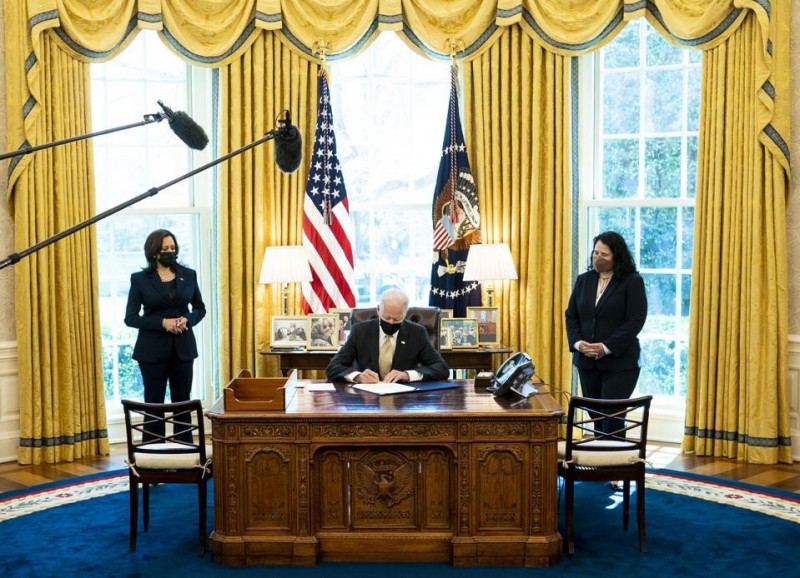
President Joe Biden has signed the PPP Extension Act of 2021, thereby extending the Paycheck Protection Program an additional two months until May 31, 2021. The act then provides an additional 30-day period for the SBA to process applications that are still pending even beyond the deadline.
SBA Administrator Isabella Casillas Guzman said that President Biden sent another strong message to America’s more than 30 million small business owners who were negatively impacted by the pandemic: help is here.
“By signing the PPP Extension Act of 2021 and the American Rescue Plan Act into law, the President is providing additional critical relief to the smallest of the small businesses – the mom-and-pop shops that line our Main Streets and keep our local and regional economies going,” Casillas Guzman said.
The bill had strong bipartisan support to extend this critical relief to hard-hit small businesses. Thus far, more than 8.2 million PPP loans have provided struggling small businesses with the relief they need to keep workers employed and make ends meet during this pandemic.
“The SBA remains dedicated to reaching the heart and soul of the nation’s urban, rural, and low-income communities – the smallest businesses – and removing barriers to access this vital relief,” the SBA Administrator added.
This bill is well-intentioned and welcome news for countless small business owners who are struggling right now. There are major concerns, however. While the program’s ending date has been extended until the end of May, in all likelihood, experts say PPP funding is going to run out in the next two or three weeks. If that occurs, this extension ultimately will not have any impact sole proprietors/independent contractors and underserved (often Black-owned and Brown-owned) businesses that the Biden Administration vowed to help.
Some key issues were not really understood or discussed by key policy makers and the White House prior to passing the extension.
1. Money is likely going to run out in mid to late April. Many Schedule C borrowers will not be able to take advantage of Biden’s changes to the PPP that he announced on February 22. Most lenders are likely to shut down their platforms even before money runs out.
2. Many lenders have still not updated their platforms to support new Schedule C Gross Income calculation rules. In fact, Chase Bank only recently announced that it will make the Schedule C changes for its customers.
3. Error codes must be resolved, and many of the loans that are being held up belong to larger firms for bigger amounts. The remaining PPP funds pool will be allocated to those loans that are on hold – an estimated 190,000 of them. These larger PPP applications may use up $30–40 billion of the remaining $73 billion in the lending pool.
On Feb. 22, President Biden said he would improve PPP by changing Schedule C calculation rules and providing a special two-week period for small businesses with fewer than 20 employees to have exclusive access to the program. However, the SBA did not release updated forms based on his PPP changes until March 3, and many of the companies that were supposed to benefit from the changes were unable to take advantage. Thus, the special two-week period (Feb. 24 – March 9) for the smallest businesses did not have much of an impact because many lenders did not have time to update their platforms. As larger businesses get their second draw loans, they will leave little funding for Schedule C borrowers who really need the money to survive.
What can be done?
Policymakers must be fully apprised of the problem that the PPP money may run out before many Schedule C borrowers and underserved businesses are able to apply. They should allocate some additional special funding for Schedule C borrowers, make the Schedule C changes retroactive for those businesses who took money early in the program, and issue a new form to make the process simple for lenders to implement.
One place to find money for additional PPP loans is to pull from the SBA's EIDL program. Since the loans are forgivable, PPP has proven to be the much more popular program for those eligible to apply for funding.
PPP is a well-meaning initiative that has had some issues because of timing and bureaucracy. It would be something of a tragedy when the money targeted for truly small businesses runs out. The money is going to run out soon, despite the extension, unless additional capital is infused in the PPP program.
If the pool dries up before the error codes are solved, it might look like the administration did not plan well and could potentially become a source of embarrassment for President Biden, who has been a big proponent of helping small businesses through the PPP. The Feb. 22 changes and the extension have raised the hopes of a lot of people and made it simpler to take advantage of the opportunity that the PPP provides. The government now has to make sure the money is available to back up these goals.
Source: https://www.forbes.com/sites/rohitarora/2021/03/31/extending-the-ppp-deadline-is-not-enough-to-help-small-business-owners/?sh=21858981df6b

